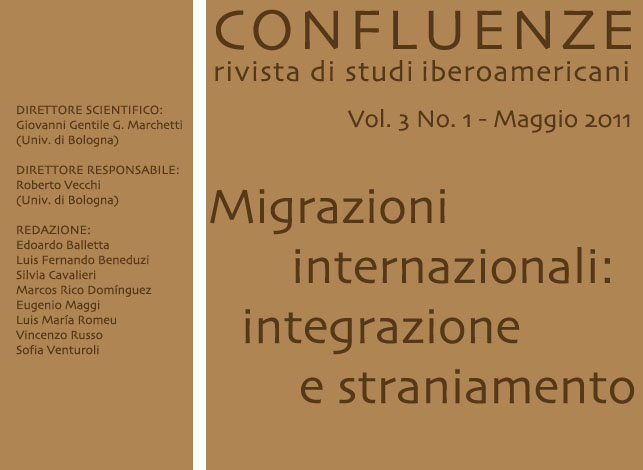Imaginarios de la migración/Migraciones del imaginario: “Ausencia” de Daniel Alarcón
DOI:
https://doi.org/10.6092/issn.2036-0967/2207Abstract
This article explores the characteristics adopted by the discourse of the migrant subject in the story "Ausencia" (Absence) by the Peruvian writer Daniel Alarcón. Since the verification of a nomadic subject, it examines the re- articulation of the notions of territory, center / periphery and the confrontation with the "other." As a result of the analysis of these issues, we conclude that this narrative by Alarcón offers no relief to the subject from a dialectical synthesis of his identity; on the contrary, it leaves him suspended in an unfinished and amazed identification process. Keywords: Latin-American Literature, Daniel Alarcón, identity, subject, migration. Este artículo explora las características que adopta el discurso del sujeto migrante en el cuento “Ausencia” del escritor peruano Daniel Alarcón. A partir de la constatación de un sujeto nómade, se examina la re-articulación de las nociones de territorio, centro/periferia y el enfrentamiento con el “otro”. Como resultado del análisis de estos aspectos se concluye que esta narración de Alarcón no ofrece al sujeto el alivio de una síntesis dialéctica de su identidad, sino que, por el contrario, lo deja suspendido en un proceso de inacabada y asombrada identificación. Palabras clave Literatura latinoamericana, Daniel Alarcón, identidad, sujeto, migración.Downloads
Published
2011-06-23
How to Cite
Tala, P. (2011). Imaginarios de la migración/Migraciones del imaginario: “Ausencia” de Daniel Alarcón. Confluenze. Rivista Di Studi Iberoamericani, 3(1), 164–173. https://doi.org/10.6092/issn.2036-0967/2207
Issue
Section
DOSSIER
License
Copyright (c) 2011 Pamela Tala
The copyrights and publishing rights of all the texts on this journal belong to the respective authors without restrictions.
This journal is licensed under a Creative Commons Attribution 4.0 International License (full legal code).
See also our Open Access Policy.
Metadata
All the metadata of the published material is released in the public domain and may be used by anyone free of charge. This includes references.
Metadata — including references — may be re-used in any medium without prior permission for both not-for-profit and for-profit purposes. We kindly ask users to provide a link to the original metadata record.






